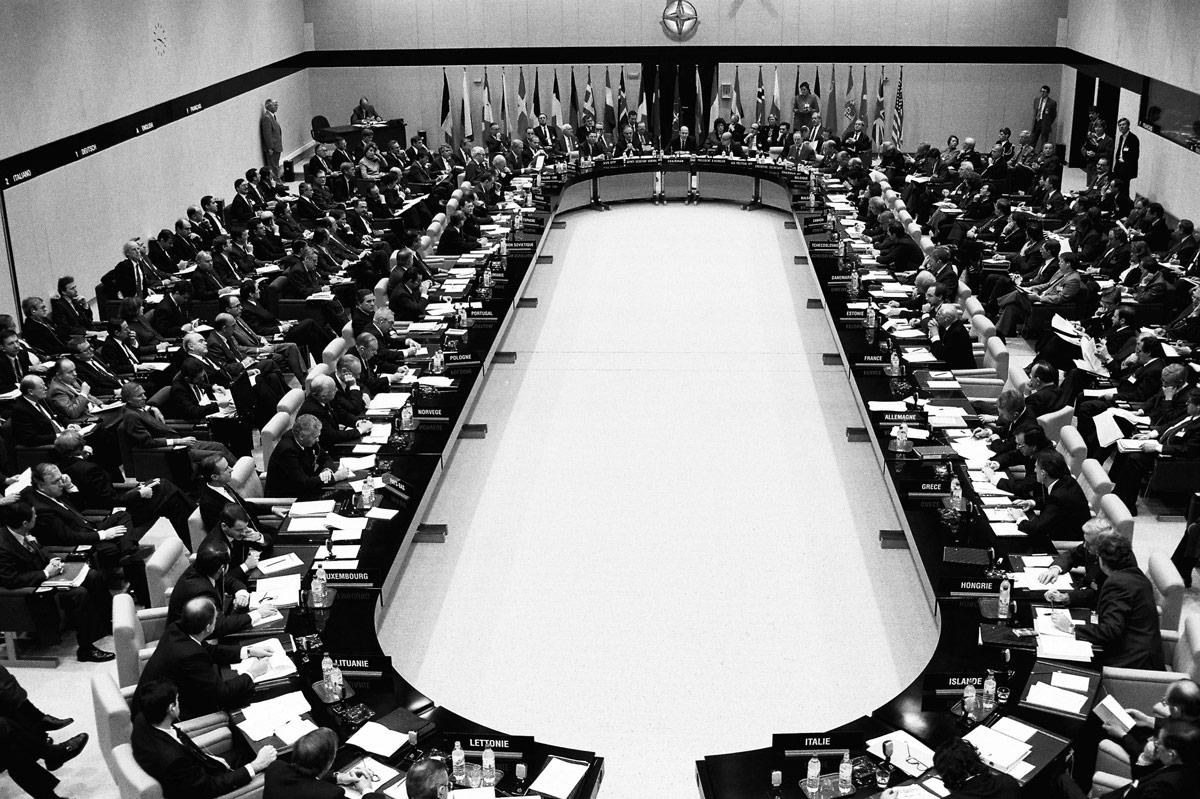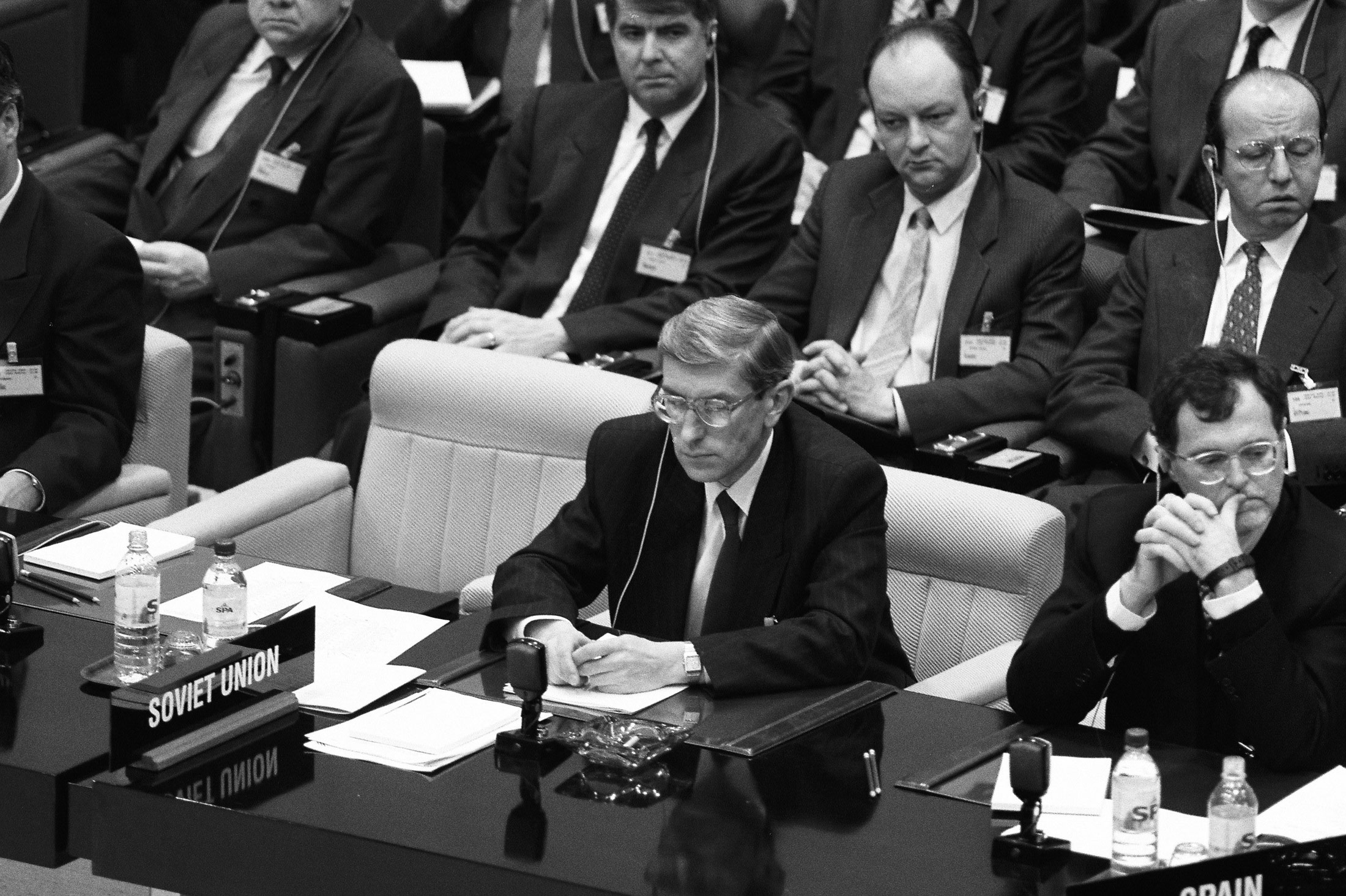Such was the pace of change in Europe that this inaugural meeting of the NACC itself witnessed an historic event: just as the final communiqué was being agreed, the Soviet ambassador announced that the Soviet Union had dissolved during the meeting and that he now only represented the Russian Federation.
Chris Donnelly, former Special Adviser to the Secretary General for Central and Eastern Europe, was present at this meeting. When asked about this dramatic moment in NATO’s history, he said the following:
Soviet Ambassador [Afanassievsky] was summoned in the middle of the meeting, out of the meeting, returned half an hour white-faced to say that he asked for the record to be withdrawn because the Soviet Union had just legally ceased to exist. I think that's perhaps the most dramatic moment of all.





